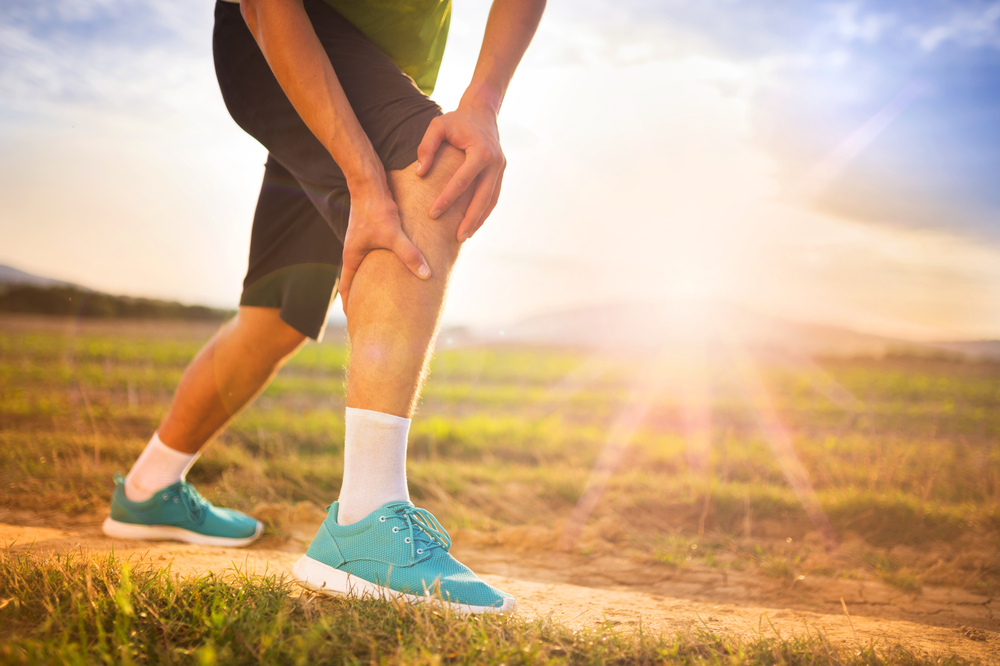
Whether you have just finished a long, tough run, or are coming back from an arduous cycling ride, suffering from sore muscles is a common complaint for many athletes. This type of muscle soreness results from overexertion and fatigue and needs to be treated promptly so that any injury may be averted.
It is normal to have sore muscles after a workout especially if it is an activity that you are not used to doing or one where you kick up the duration as well as the intensity level of the workout. Any such change in the routine of a workout is usually felt after 12 – 48 hours after the workout and is what experts call Delayed Onset Muscle Soreness.
Is muscle soreness integral to a workout?
No one is immune to muscle soreness. In fact, everyone from beginners to body builders can suffer from sore muscles. The muscle discomfort is simply an indication that the workout has stressed the muscles and is causing them to adapt to make muscles stronger and better able to perform the task next time.
However, it is kind of important to know the difference between moderate muscle pain, the kind that is triggered by exercise, and muscle overuse that may cause injury. For many people, experiencing moderate muscle pain and soreness may be encouraging in keeping them on the path to fitness, since it is an indication that they are working their muscles. Muscle overuse, on the other hand, will prevent the individual from carrying on daily activities and can easily deter the person to continue with its workout.
How can muscle pain be relieved?
There are various techniques to relieve sore muscles, many of which can be carried out at home or with the help of a professional such as a massage therapist.
Massage is an effective sore muscle treatment as the practice relaxing, meditative and healing all at the same time. Massage therapy offers multiple benefits to athletes and speeds up the recovery process.
Temporary muscle pain that does not involve swelling or other uncomfortable symptoms can be managed by resting for a few days. Muscle pain is an indication that the body needs a time out and taking a short break from the workout will give muscles time to heal. Rest is often overlooked in a workout regimen but needs to be an integral part for effective pain management.
For other ways to relieve sore muscles, try icing or heating the affected area. When icing muscles to relieve soreness after an activity, the practice helps to reduce inflammation and provide long lasting relief. However, ice should always be applied indirectly to the area by wrapping it up in an ice pack or a light cloth as a buffer.
Likewise heat can also be applied to relieve muscle pain. Taking a warm bath or shower is a good way to start. In this case, the heat works to boost the blood flow of the muscles and allows them to relax thus. Sometimes, alternating warm and cold water when taking a shower can provide the benefits of a homemade hydrotherapy treatment.
When rest, ice or heat are not enough to ease sore muscles, common OTC pain relievers can be relied upon. These pain relieving drugs are effective in abating pain symptoms and some even have anti-inflammatory properties. However, it is important to remember that their analgesic effect is only temporary and frequent use can lead to dependency.
Another way to go is to use topical pain treatments to manage muscle soreness. These can be applied right on to the skin to help sore muscles. The creams and gels have soothing ingredients like menthol to sooth the muscles from outside in and can be helpful in providing sore muscle relief.
How can sore muscles be prevented?
While muscle soreness cannot be completely prevented, there are ways to minimize the discomfort.
Expert opinion suggests that one of the best ways to prevent muscle soreness is to ease into an exercise routine. At the same time it is equally important to stretch and flex the muscles. Stretching is helpful in not only building flexibility but also useful for relieving tension. And using a range of stretching moves will permit athletes and runners to experience the full benefits of stretching.
After a strenuous workout, a cool down phase is also important as it eases the body back into reality and preps the athlete for the next workout. A good cool down is useful in bringing the body back to its resting state, helps flush out waste products and assists in maintaining healthy muscle function.
Working out is also a process of muscle conditioning and the primary reason why athletes of all sorts try to include cross training and various other routines into their workout. Adding variety continues to develop their muscles while challenging their strength and minimizes muscle soreness.
Another way is to avoid soreness before it happens is by taking ample vitamins, antioxidants and other supplements to prepare the body for a more demanding workout. Antioxidants and vitamin C are known to be effective in sore muscle treatment. Options like blue berries, green tea and artichokes are all antioxidant rich foods while citrus fruits, guavas and chilli peppers are good sources of vitamin C.
While on the topic of nourishing muscles, it is important to hydrate them as well. Water helps to flush out toxins from the body and keep it hydrated. But dehydrating muscles can cause the soreness to aggravate and even lead to muscle cramps.
How do you relieve your muscles? Just comment below! 🙂